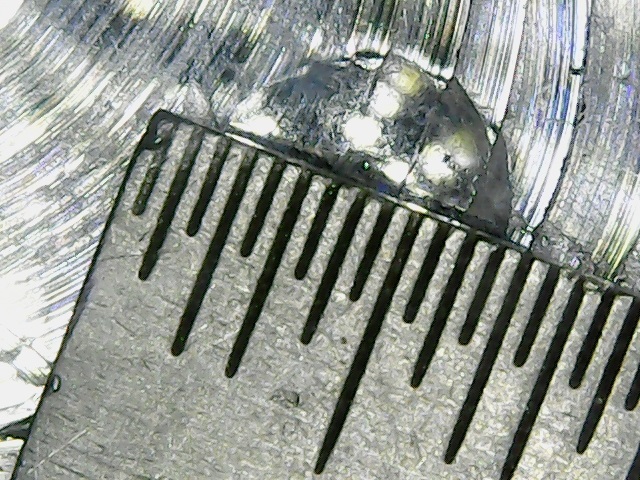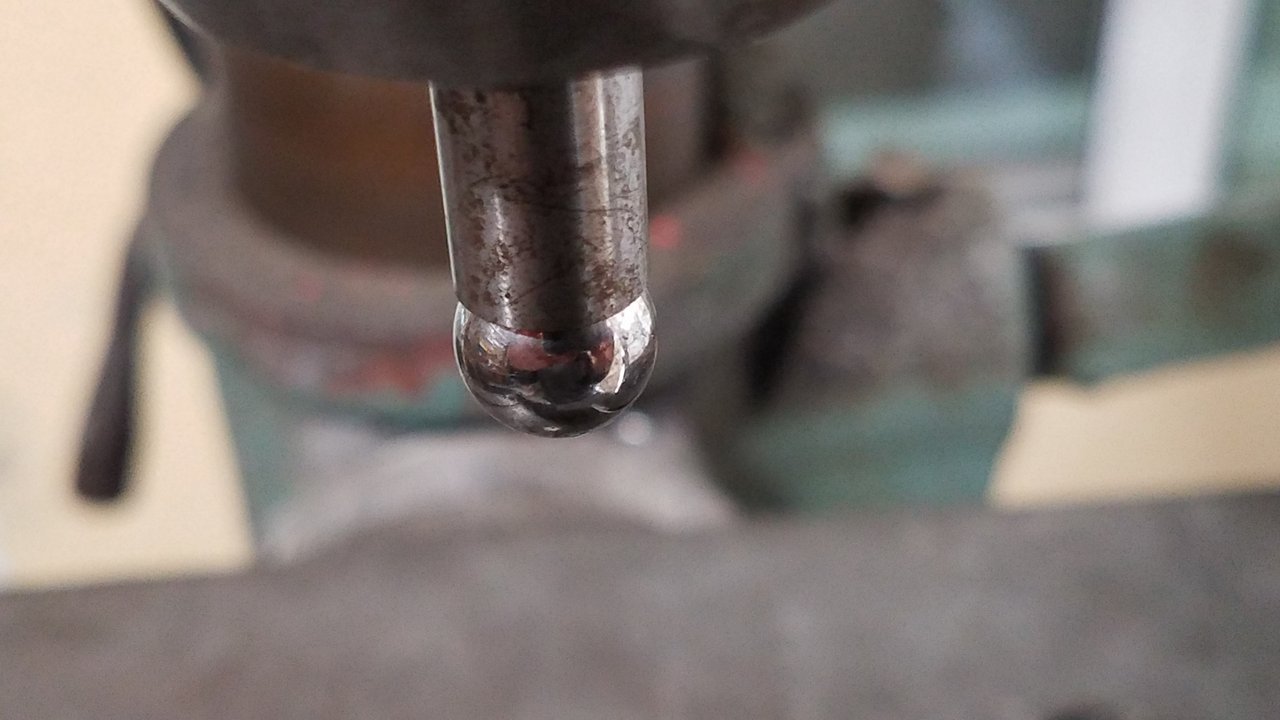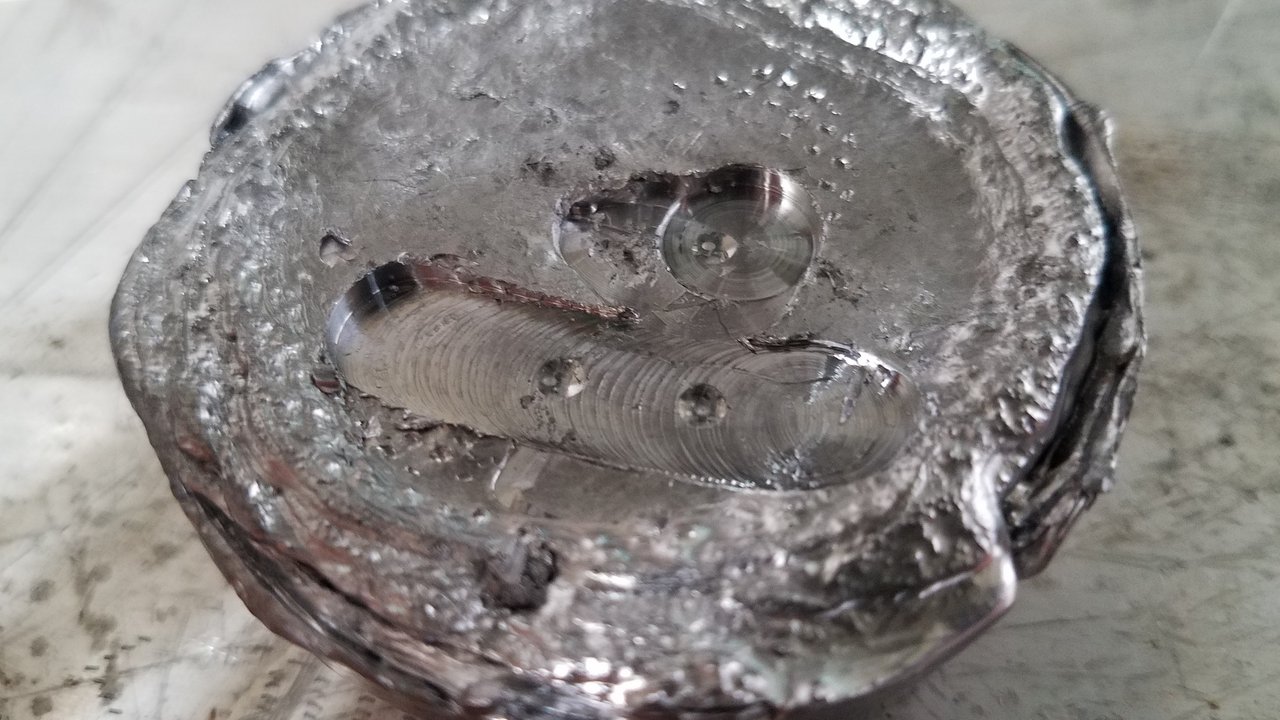this experiment:
-bathroom scale
-spherical steel bearing mounted in beveled steel tube
-drill press
-USB microscope
-ruler with 1/100th inch markings
-dial test indicator
-end mill
It seems to me if you have a drill press and a way to chuck a ball bearing up to it can put pressure on something, then you can measure that pressure with a bathrooms scale and voila measure BHN. So thats what I did. The dial test indicator is there just to see if I can simultaneously measure BHN using displacement of the indenter along the pressure axis
First I chucked up an end mill and did a very rough horizontal cut to create a flat surface. Beware trying to just plunge the endmill, as it may have a relief of some kind and might not create a flat surface unless its moved horizontally. I used the drill presses table to crudely rotate the lead ingot in an arc and make a sweeping cut. Its lead so chattering isnt an issue but its still a rough operation.
The bathroom scale freezes if there is no change in weight for a second or two. This is not ideal. An analog scale or a scale which will read out continously would be better. Being able to hold the indenter in place for 30 seconds while the lead creeps may be important. I suppose you could "calibrate" your press by placing a known weight at the end of one arm and seeing what pressure you get on the scale. Would have to set it up for very little displacement and make that calibration basically while indenting the piece of lead at a spot right next to the actual measurement spot.
I got .008" vertical displacement and about a .105" diameter indentation at 100lbs with a 6.45mm indenter
According to my algebra a .105" diameter indent is a BHN of about 7.7. That is not inconsistent with my alloy, which is basically jacketed range scrap with maybe a small amount of tin added, then the ingots dropped pretty fast into water.
Going by displacement instead, I get a BHN of 11. My displacement measurement is not perfect and could easily be off by .001" which could change the BHN by 1.5, so its probably not as reliable as the indentation in this case.
I used a cheap USB microscope and a steel rule to measure the indentation.
Anyways this whole thing seems ripe for a home shop type person to come up with a great way to do it.
It would be cool if you could directly measure the indentation using displacement instead of eyeballing its diameter..but a more accurate measurement setup would be needed. Not that much more, but more. I may try again.
I wish I had something with a very well known BHN so I could test this. I have TIN nuggets from rotometals...that might work right?


|
   
   
|


|








 Reply With Quote
Reply With Quote














